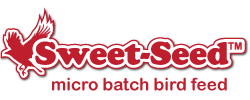How Do You Clean a Hummingbird Feeder?

A clean hummingbird feeder is a beautiful, sparkling gem in your yard, glittering like a tasty beacon to attract hungry hummers. A dirty hummingbird feeder, on the other hand, can be a dull, sticky, smelly mess that not only discourages hummingbirds, but could attract unwelcome wildlife like stinging insects, voracious ants and scavenging raccoons. Fortunately, you can keep your hummingbird feeder fresh and clean with just a few simple steps.
8 Steps to a Clean Hummingbird Feeder
Ideally, you should thoroughly clean your hummingbird feeder every time you refill the nectar. During the hottest summer days, this could be as frequently as every 2-4 days, though during cooler periods, a weekly cleaning can be sufficient. Whenever your hummingbird feeder shows signs of dirt such as excess insects, a foul odor or murkiness in the liquid, it is time for a good cleaning.
- Empty the Feeder If there is still nectar in the feeder, it needs to be drained before cleaning. Nectar can be discarded down the sink or poured out in the yard, but be aware that the sticky sweet puddle may attract insects or other unwanted guests if it is poured in the yard. If you do opt to discard nectar in the yard, pour it far away from pathways, decks or patios, and preferably in an area where it will be easily washed away with rain or irrigation.
- Completely Disassemble the Feeder For the best cleaning, it is necessary to completely disassemble the feeder. Remove all insect guards, unscrew all feeding ports, detach all bases and hooks and otherwise separate all parts that can be separated. This is necessary for proper cleaning of all nooks and crannies of the feeder's structure where old nectar may have seeped.
- Soak the Feeder in Hot Water Soaking the feeder for several minutes in very hot water (be careful about burns on delicate skin) will dissolve any crystallized sugar and make it easier to clean without added bleach or other chemicals. You may add a small amount of bleach if you want to sterilize the feeder, but that is usually unnecessary as the feeder will become contaminated again as soon as it is refilled and revisited by hungry birds.
- Scrub All Parts of the Feeder Use a soft bristle toothbrush, non-scratching sponge or similar cleaning cloth to completely scrub all parts of the feeder in the hot water. A tiny brush designed for hummingbird feeders or a stiff pipe cleaner can be used to get inside narrow feeding ports, and a bottle brush can get inside narrow nectar reservoirs.
- Rinse Thoroughly After scrubbing, use clear, clean water to thoroughly rinse all parts of the feeder. This will remove any remaining traces of bleach, soap or other chemicals. While rinsing, check that all feeding ports are flowing freely and there are no hidden clogs or other problems with the feeder's different parts.
- Dry Thoroughly Dry the feeder completely after it is clean. This will ensure there is no leftover moisture that could inadvertently dilute nectar when the feeder is refilled, and there will be no water that could interfere with how the feeder is reassembled, creating loose seals that may leak or drip.
- Clean Around the Feeder While the different parts of the feeder are drying, use a clean, damp rag to wipe down the feeder's hanging pole or hook, as well as be sure the area around the feeder is free of drips, stains or puddles. If necessary, prune or trim plants near the feeder that may have gotten dribbled on to ensure there is no old, leftover nectar that will attract unwanted pests.
- Reassemble, Refill, Rehang and Enjoy! Finally, your hummingbird feeder is ready to be put back together. Carefully reassemble the feeder, ensuring that all parts fit snugly so there will be no leaks or drips. Refill the feeder with fresh, cool nectar, hang it back where the birds will expect it and be ready to enjoy more visits from hungry hummers!
A clean hummingbird feeder is more attractive to hummingbirds and healthier for them to use. By thoroughly cleaning your feeder on a regular basis, you can be sure you have a safe, effective feeding station for all hummingbirds to visit.
Image by Dawn Sinclair from Pixabay
